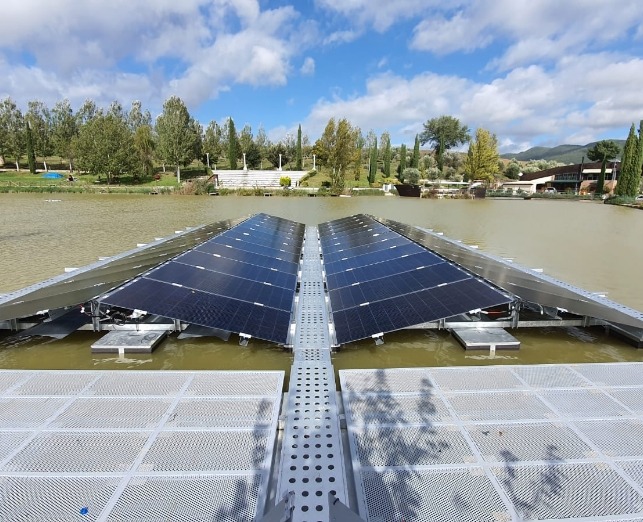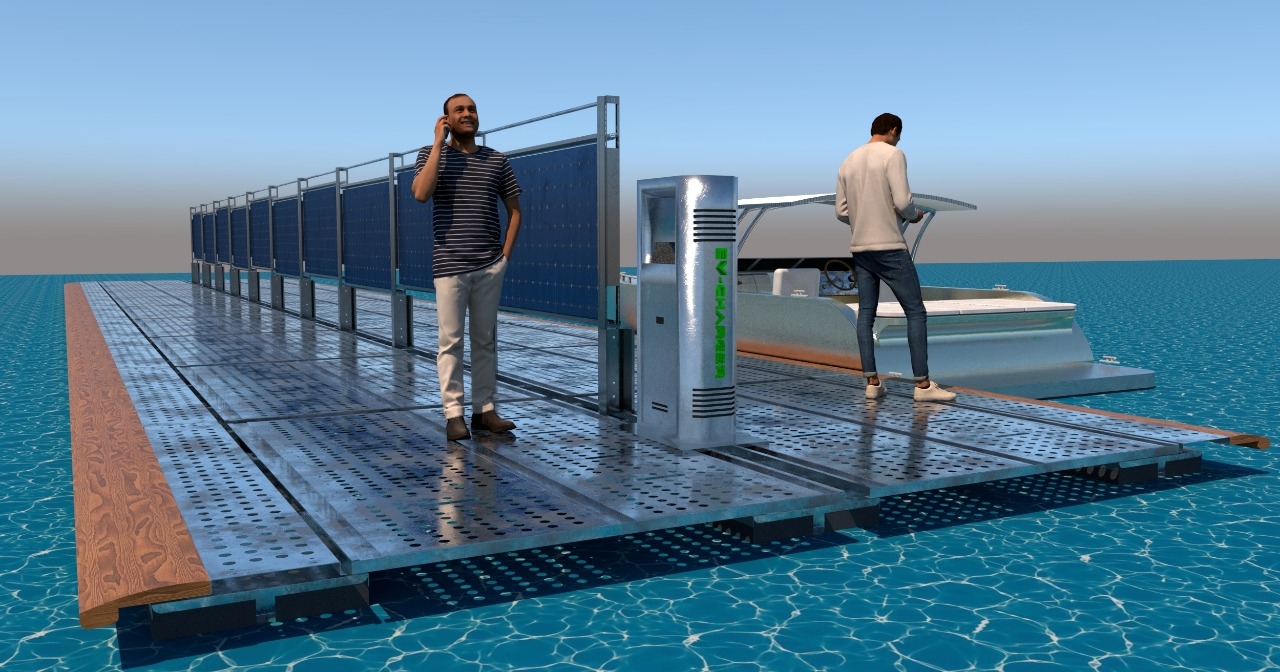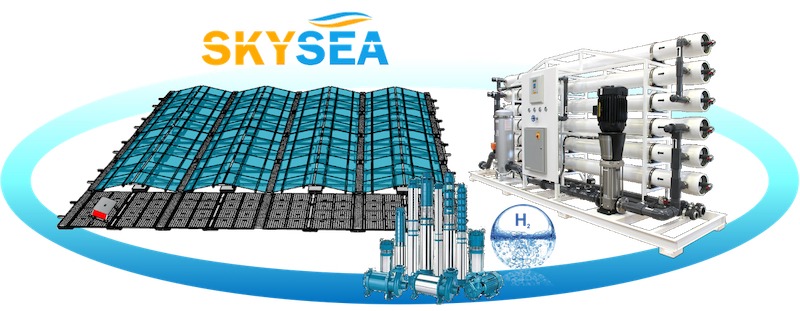sky wat
SkyWat is the patented, highly efficient floating photovoltaic system.

The low impact floating system
The SkyWat floating solar structure is composed of modular blocks, made of steel, designed to be unsinkable. The durable structure combines the high energy density of the layout with modularity of assembly, ensuring rapid deployment and top-level manufacturability, able to withstand all weather conditions.
The aluminized steel structure guarantees a level of corrosion resistance at least four times higher than normal galvanization, while the ease of positioning and implementation in non-proprietary basins minimizes costs and allows for very fast assembly. SkyWat is designed to ensure that every element is functional and essential to maximize its functionality in all aspects.


SECURITY AT THE HIGHEST LEVEL
The steel system, free of plastics, is totally fire resistant, provides great weather resistance and makes it easy and safe for operators to operate.

GREAT PERFORMANCE
The structure is specially designed to take advantage of the efficiency of bifacial PV modules, which, in combination the structural aspects that maximize the cooling of the panels themselves and the peculiar engineering of the layout, enables significant economic returns through high production efficiency performance.

HIGH DENSITY
The facility has a density grade of 4900 m² (continuously increasing) per installed MWp, making it one of the most compact utility solutions on the market, benefiting more optimal surface area utilization and loss reduction.

QUICK INSTALLATION
Thanks to the modularity of assembly of the SkyWat floating structures, a utility system can be installed in no time and with great safety.

DIGITAL MANAGEMENT AND AUTONOMOUS ROBOTIC CLEANING
Plant management and maintenance can be enhanced and optimized by integrating autonomous predictive and robotic machinery connected to and managed by SCADA-type systems.

CIRCULAR SOLUTION
The structure, with no welded parts or chemically combined materials, can be disassembled, reprocessed and reused at the end of its life, applying the virtuous logic of the circular economy and maintaining economic value.

The SkyWat plant is not only intended to be a generator of clean energy: it is also designed to provide for complex macro-engineering integrations, such as the treatment, desalination and storage of water, the combination of water and electricity to produce hydrogen, recharging for electric boats, the integration of underwater data centers and the treatment/cleaning of debris within the basins.


SkyDoc variant – the floating photovoltaic system for the evolution of commercial ports.
SkyDoc is a special configuration of Skywat and similar modular blocks, designed for installation in marinas and commercial ports.
The resilient steel structure with double-sided photovoltaic panels that can be installed both vertically and horizontally, makes it perfect for replacing docks in ports, leaving the necessary space for the movement of users in total safety while exploiting the space for power generation and integration of electrified services, even at a later date (e.g. integration of advanced services such as E-BOAT Charge).
SkyDoc offers two highly functional dock solutions: the Vertical East/West solution and the Roof East/West solution, respectively with a vertical panel arrangement and one with a horizontal gabled orientation for functional roofing for the individual installation.

SkySea is the integrated water desalination and hydrogen production system
SkySea is the macro-systemic technological combination par excellence that can be achieved thanks to the SkyWat structure and which involves the use of water and solar energy to produce and consume energy in an extremely efficient manner: all in the same place, safely and with great compactness.
This complex system makes it possible to combine the production of renewable energy, desalinated water and green hydrogen at competitive costs, even totally off-grid and by defining the respective quantities of the 3 products according to the need of the moment for each individual plant and according to the infrastructural supplies already in place.
This system fosters the development of complex solutions in many fields: civil infrastructure, agriculture, fish farming and industry, enhancing even desert areas towards productivity, redevelopment and sustainable profit.
